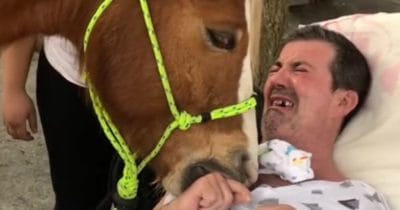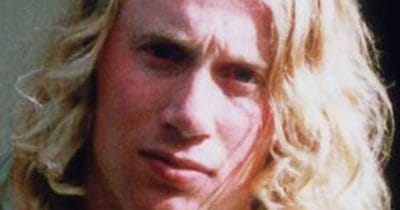
King Charles has plenty of new duties as the new monarch following the death of Queen Elizabeth. Of course, the former Prince has been preparing for these duties for decades – now, it’s finally time for him to take on a significant number of responsibilities with his wife, Camilla, the Queen Consort.
As a Prince, Charles had a lot to do, not to mention the extensive charity work that he undertook. Indeed, it feels as though King Charles was the heir forever, always waiting, always ready.
In the 1980s, however, things could’ve taken a terrible turn, with one Royal Engineer revealing that the King was close to dying “on live TV.”

King Charles has now been King for a month. After the two-week-long mourning period for the late Queen Elizabeth, he, alongside his wife, Queen Consort Camilla, is now back to performing royal duties.
King Charles returns to work
On Monday last week, the King and Queen Consort visited Dunfermline, Scotland, for its 950th anniversary, and met with representatives from Historic Scotland to learn more about the local area’s history. The former town was recently officially turned into a city during the Queen’s Platinum Jubilee celebration.
Since then, Charles and Camilla have been busy performing several engagements. Even so, it’s safe to assume that the shadow of the late Queen Elizabeth will hang over them for a good while yet.
On Tuesday, King Charles and Camilla attended a reception at Victoria and Albert Halls in Ballater, Aberdeenshire, Scotland, near the Royal Family’s Scottish residence. There, they got the opportunity to thank the local community for their support and organization surrounding Queen Elizabeth’s passing.
Queen Elizabeth’s coffin made its way to Edinburgh from Balmoral Castle last month, where she was laid in rest at the St. Giles’ Cathedral. Around 25,000 people lined the streets across the city and county to pay their respects to Her Majesty.
For Charles and Camilla’s visit to Victoria and Albert Halls, individuals including council workers, civic leaders, and pupils from Ballater’s Crathie School, were in attendance. According to Aberdeenlive, more than 500 people were involved in organizing the events following the Queen’s passing.

Creating new traditions
Just days before the funeral – and days after Her Majesty’s death – King Charles took the time to thank the nation.
“On behalf of all my family, I can only offer the most sincere and heartfelt thanks for your condolences and support. They mean more to me than I can ever possibly express,” he said.
Now, with a new monarch comes new traditions, and it appears some of the old ones will disappear as Charles and Camilla take charge. One of those traditions is very old, though Camilla has reportedly decided not to follow in the late Queen’s footprints in adhering to it.
As per reports, Queen Elizabeth had “ladies-in-waiting,” those in charge of supporting the monarch with personal correspondence and organizing her schedule.
Moreover, they accompanied the Queen during her scheduled public appearances and, amongst other things, helped gather flowers the public wanted to give to the Queen.
However, Camilla seems to have decided not to use ladies-in-waiting, one of the oldest positions within the royal house.

A source told Daily Mail that the Queen Consort wants to “remodel” the monarchy – instead of ladies-in-waiting keeping her longtime private secretaries.
Coronation of King Charles – details
“When she got married and set up her own office for the first time, she got two brilliant private secretaries, Amanda Macmanus and Joy Camm. But they were very much “two for the price of one,” the source explained.
“The Queen Consort will do things a little differently. She currently has two private secretaries who do some of those traditional duties anyway. And she has quite a lot of good and decent friends around her whom she can call on, as and when is necessary, to support her. I suspect she’ll dip into her close circle of friends, maybe geographically.”
The UK hasn’t seen a coronation since June 2, 1953, when the coronation of Elizabeth II took place at Westminster Abbey. Next year, however, the coronation of King Charles will happen, and just weeks ago, details of the big event were revealed. Interestingly, just as Camilla has decided to skip one tradition, King Charles is set do the same with another.
The exact, official date of King Charles’ coronation is not yet set. However, reports suggest that it might take place on the 70th anniversary of the Queen’s coronation – or the day after, on June 3.

In 1954, when the Queen was crowned, the event was huge. According to the official royal website, more than 8,000 guests attended Westminster Abbey for the coronation. An incredible 129 nations were officially represented.
Decreasing number of guests & new dress code
As tradition dictates, the monarch was presented with many gold objects, including a robe, bracelets, and spurs.
According to the Royal Collection Trust, during the coronation service, the orb is placed in the monarch’s right hand as they are invested with the symbols of sovereignty. It is then placed on the altar before the moment of crowning.
King Charles will receive the orb and scepter as symbols of his new role as monarch. Then, the Archbishop of Canterbury will place a solid gold crown on his head.
The Queen’s crowning was a fabulous and significant event. However, King Charles is reportedly going to veer slightly away from tradition and do things differently.
According to Daily Mail sources, Charles will dramatically decrease the number of guests to just over 2,000. Also, the ancient traditions – for example, the presentation of the Orb and Scepter. – will be shortened to about one hour. According to the Mail, the Queen’s coronation lasted about three hours.

The monarch is reportedly also planning to order a more relaxed dress code. For example, he will “possibly allow” lounge suits instead of peers wearing ceremonial robes.
King Charles – royal duties and charity work
King Charles has been preparing for life as King for many years. His official duties as heir to the throne involved all sorts of engagements. And over the years, he has been very passionate about botany and gardening. Like his father, the late Prince Philip, Charles is enthusiastic about the environment and so has been involved in many environmental associations.
For example, he created the Prince’s Rainforest Project in 2007 to raise awareness of deforestation. Moreover, Charles is also the president of the WWF in the UK and even started his own organic farm and garden at Highgrove Gardens.
However, given that Charles is now King, he will likely have to give up some of the causes that lay closest to his heart, as he simply won’t have time to give them the necessary attention.
As Queen Elizabeth’s health deteriorated in the latter years, he carried out many of her responsibilities. For example, in 2013, he represented his mother for the first time at the Commonwealth Heads of Government. He also delivered the Queen’s speech at the opening ceremony of Parliament in 2022.
Of course, becoming King doesn’t only concern the UK; Charles also becomes Head of the Commonwealth. That includes 54 independent countries, and Charles becomes the head of state for 15 nations, including Australia and Canada.

King Charles has performed his royal duties for decades. He’s visited many countries worldwide, and has largely done so without incident.
King Charles’ near-death-experience
Yet there was one occasion in the 1980s where Charles was close to being the center of what could’ve been a very tragic accident.
In fact, he could’ve died – during a live television broadcast.
In 1545, King Henry VIII’s flagship, The Mary Rose, sank during a battle with the French fleet. It sank in Solent, between the Isle of Wight and Great Britain, and would lie on the ocean bottom thereafter for centuries.
In October of 1982, The Mary Rose was excavated, and then-Prince Charles was there to watch the effort. Charles was a huge fan of the ship’s history and supported the efforts of lifting the ship from its ocean grave. As a result, he wanted to watch the process with his own eyes. He was even one of the last people to dive down to the wreck alongside archaeologists just outside Portsmouth Harbour.
“I remember my days of diving on the ship out in the Solent in the most impossible conditions, it was like swimming in a kind of lentil soup, you couldn’t see anything, or so I thought, until it was under your nose,” Charles recalled when meeting volunteers and fundraisers at the Portsmouth Historic Dockyard, Hampshire in 2014.

“What I could never get over was the sheer expertise of the archaeologists operating under water.”
“I thought it was all my fault”
Moreover, the then-Prince recalled that he himself encouraged the workers to work despite technical difficulties and poor weather.
“I will never forget the almighty crash as the chains came down, and I thought it was all my fault. I think it was worth taking the risk as we have this truly remarkable example of a Tudor warship which is unique,” Charles said.
As King Charles said, he will never forget the crash. But the reality is that the crash could’ve been remembered today as the day when the heir to the throne died. That, according to the Channel 4 documentary Raising the Mary Rose: The Lost Tapes, which marks 40 years since the excavation took place.
As reported by the Daily Mail, Charles examined the vessel up close as it was lifted from the seabed. He was supposed to board the remains of the vessel. However, security was critical and the idea was ruled out as too dangerous.
Suddenly, the giant crane called Tog Mor – Gaelic for “big lift” – collapsed. The frame broke away and almost smashed the ship’s hull, close to where the King would have been standing.

Royal Engineer Jack Frost was involved in the operation of lifting The Mary Rose from the sea and saw the crash with his own eyes.
Survived without a scrath
“You know, the future king of England could have died live on TV, which I think would have changed the whole aspect of the recovery, to be honest. Everything went silent. There wasn’t a whisper. No one spoke for what felt like minutes, was probably ten seconds, but just no one moved,” Frost said in the documentary Raising the Mary Rose: The Lost Tapes.
Another man, Martin, who helped build the crane, recalled the incident.
“I remember when the frame broke the water, and after only about half an hour, there was a loud crack. Everything stopped, and everyone at the office panicked. We immediately thought the crane had failed,” Martin said.
In the end, King Charles made it through without a scratch, and the ship was saved. In fact, without the monarch, it’s not too great a stretch to say the ship might probably still be underwater.
The documentary revealed that Charles helped with input regarding the ship’s recovery. It was also the now-monarch who encouraged the construction engineering company in charge to loan the enormous Tog Mor crane.
Please, share this article on Facebook if you enjoy reading about the royals!





